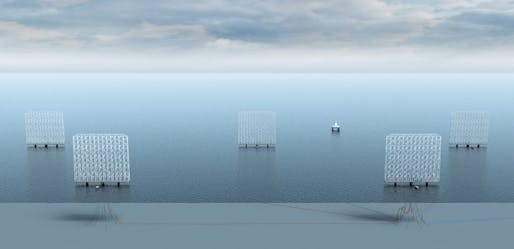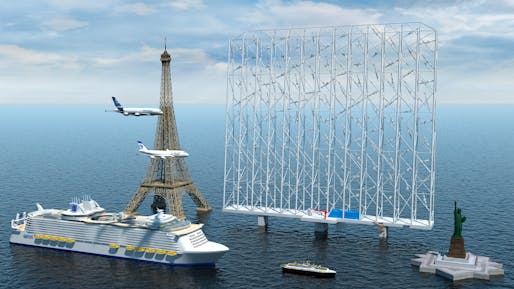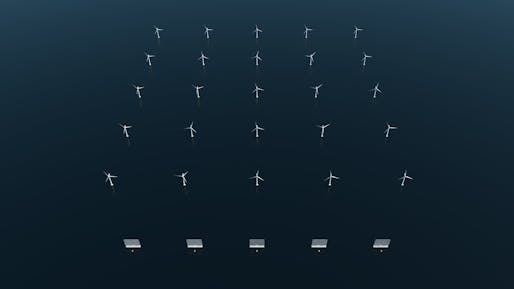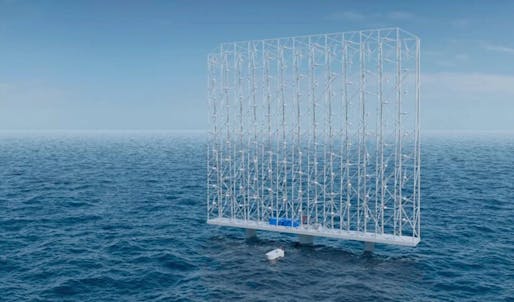Norwegian company developing 1,000-foot-tall offshore wind turbine farms that could power 80,000 homes each
A Norwegian company is developing a new technology for floating, offshore wind turbine farms. Unlike traditional wind farms, these are organized in stacked, square grids, standing nearly as tall as the Eiffel Tower.
The grids would stand at 1,000 feet tall, composed of multiple smaller turbines in a staggered formation atop a floating platform anchored to the ocean floor. Founded in 2017, Wind Catching Systems, in collaboration with Aibel AS as the main contractor and holding companies Ferd AS and North Energy ASA, aims to commercialize this wind catching technology.
The company claims that its grids will increase efficiency, reduce land use by 80%, and reduce production costs, allowing the system to be immediately competitive with other traditional grid prices. In addition, the team states that one wind catching unit will be able to generate five times the annual energy output of the world’s largest single turbines and could produce enough electricity for 80,000 European households. This increased efficiency is attributed to the height of the grids, which exposes the rotors to higher wind speeds. Its smaller rotors can also perform better in higher wind speeds, whereas larger turbines tend to pitch their blades to avoid damage.
Furthermore, due to their array of small turbines, the grid system eliminates the need for a massive single component, which makes them easier to manufacture, install, and maintain. As reported by Asia Times, once the wind catching unit is deployed, the installation and maintenance work can be mainly conducted on-site without the need for specialist cranes or vessels. The wind turbine grids will have a design life of 50 years, compared to the 30-year lifespan of conventional wind turbines.
“Our goal is to enable offshore wind operators and developers to produce electricity at a cost that competes with other energy sources, without subsidies,” says Wing Catching Systems CEO Ole Heggheim. “Simply put, we will deliver floating offshore wind at the costs of bottom-fixed technology solutions, which provides great opportunities on a global basis for the Norwegian supplier industry.”
The company aims to make its floating offshore wind technology competitive by 2023, which “is at least ten years earlier than conventional floating offshore wind farms.”
Investment Director at Ferd, Erik Bjørstad, states that the goal is to complete technical testing and verification during 2021 and to offer commercial development solutions in 2022.
“Wind Catching will challenge today’s established technology suppliers with its groundbreaking and patented design,” says Investment Director at North Energy Rachid Bendriss. “With our technology, offshore wind operators and developers will achieve the productions costs that they hoped to reach in 2030-2035 in a shorter timeframe.”




No comments:
Post a Comment